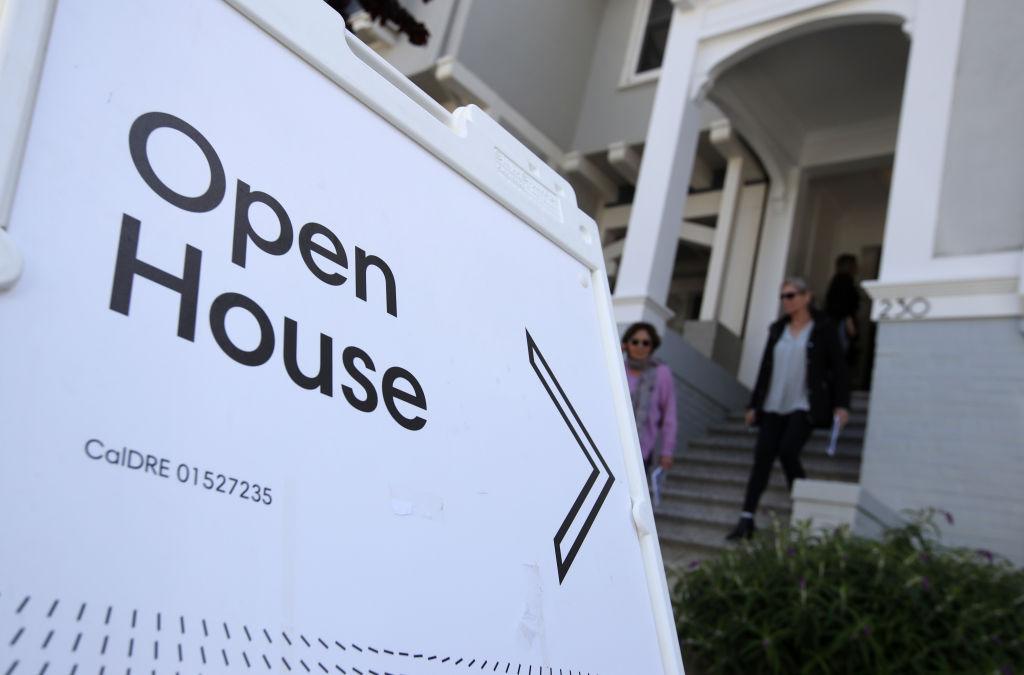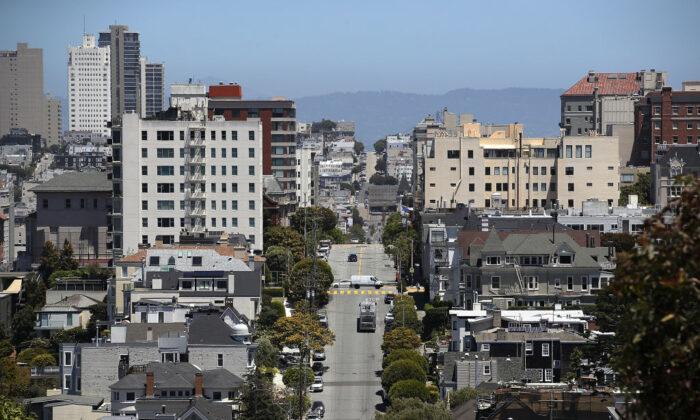San Francisco’s housing market has retreated from record highs last April, with sales volume collapsing and pricing down double digits—approximately five times the decline recorded nationally.
Prices fell 3.3 percent across the country since last year, with values in San Francisco plummeting 16.7 percent, according to Redfin—an online real estate listing company.
This decline represents more than $330 billion lost from the estimated $2 trillion real estate market, according to online real estate firm Zillow. With a 13.3 percent discrepancy between city and national price declines, if the city’s devaluation matched the national average, homeowners would have retained more than $260 billion in equity.
The stark difference between the city and country can be attributed to historically high valuations compared to the rest of the nation and the sharp increase in prices recorded in San Francisco from 2021 to 2022, according to experts.
“When the skyrocketing happened across the country, it was also disproportionate, and prices in San Francisco rose faster than in other areas,” Joe Polyak, founder of RISE Homes—a real estate firm located in San Mateo—told The Epoch Times.

With interest rates sitting at historic lows following the pandemic, many chose the opportunity to lock in long-term savings with reduced borrowing costs, said the experts.
“People went into the market last year to secure lower interest rates, and that helped a run-up in price,” Oscar Wei, deputy chief economist at the California Association of Realtors, told The Epoch Times. “So, it’s not a complete surprise for it to drop back down.”
Prices of single-family homes in the city dropped nearly 20 percent from a year ago, falling from $1.8 million to $1.5 million, with condominiums selling for approximately 13 percent discounts—down from $1.4 million to $1.1 million—according to local real estate experts.
While prices are down, the area still rates as one of the most expensive locations to buy in the state, and the country, based on median sales prices, and the reduction in sales volume is driven more by affordability than lack of demand, according to Wei.
“There’s always demand, people are interested, but sales dropped because people might have to wait with costs of borrowing so high, and they look for other areas that are more affordable,” he said.
As the Federal Reserve chose to raise interest rates repeatedly in response to inflationary concerns, borrowing costs rose from approximately three to seven percent, settling at a national average of 6.69 percent, according to federally backed mortgage buyer Freddie Mac.
Housing experts say this puts multiple levels of pressure on the market by making the prospect of owning a home unattainable for some based on affordability, and the thought of moving from a lower rate and financing with a higher rate unconscionable for others.

Housing supply tightness contributing to high valuations is not a new scenario for San Francisco or California, but the additional pressure limiting supply from interest rates is impacting the market, according to experts.
“A lot of people refinanced somewhere near three percent, and if they want to move, they have to sell it and buy a property at six or seven percent, and a lot of people just couldn’t do it,” Wei said. “Even if they’re financially capable of doing it, it feels like they’re getting ripped off.”
Such is leading many to reconsider moving and electing to start projects on their current homes and expand instead, so they can lock in lower interest rates, said the experts.
With the Fed deciding June 14 to pause additional interest rate hikes, some are optimistic that a slight reduction in the mortgage rate will spur additional economic activity, and the timing coinciding with the incoming home-buying season could lead to a slight uptick in sales later this year, according to Wei.
More than 65,000 left San Francisco between April 2020 and July 1, 2022, approximately 7.5 percent of its population, according to the Census Bureau, with housing experts saying the exodus contributed to the decline in property values.
“The trend has been leaving the city for better school districts, better weather, more parking, more space, bigger yards,” Polyak, the Bay Area realtor, told The Epoch Times. “The thing that’s been keeping people in the city so long has been the financial district and downtown, but remote work allowed people to shift to other areas.”
Nine counties encompass the Bay Area, and many have seen growth as San Francisco has declined, with San Mateo County now surpassing the city in terms of housing prices, said Polyak.
Some that chose to relocate said education was a motivating factor and noted San Francisco’s decision to delay reopening schools as an issue that impacted the housing market, according to the experts.

“The refusal to open schools back up while focusing on renaming the schools is something that left a very bad taste in people’s mouths,” Polyak said. “Especially the people that value education—which represents many in the community.”
San Francisco Unified School District kept schools closed from March 16, 2020, to April 10, 2021, while voting in January 2021 to rename 44 schools in the city that were named after historical figures.
Policies pertaining to public safety are also reportedly contributing to the city’s decline.
While the vagrancy downtown captures headlines, everyday crime affecting residents is more damaging to the perception of safety among locals, according to Polyak.
“The overall crime throughout the city that is just not addressed, burglaries, and cars broken into, the people care more about that,” he said.
Police report being overwhelmed due to a combination of understaffing and increased criminal activity, and many are discouraged by what are perceived as catch and release strategies resulting from minimal prosecutorial efforts, according to Polyak.
Data from the Internal Revenue Service shows that high-income earners are fleeing San Francisco, as the city lost more than $15 billion in adjusted gross income between 2019 and 2021, with an average income of $196,000 for those leaving.





